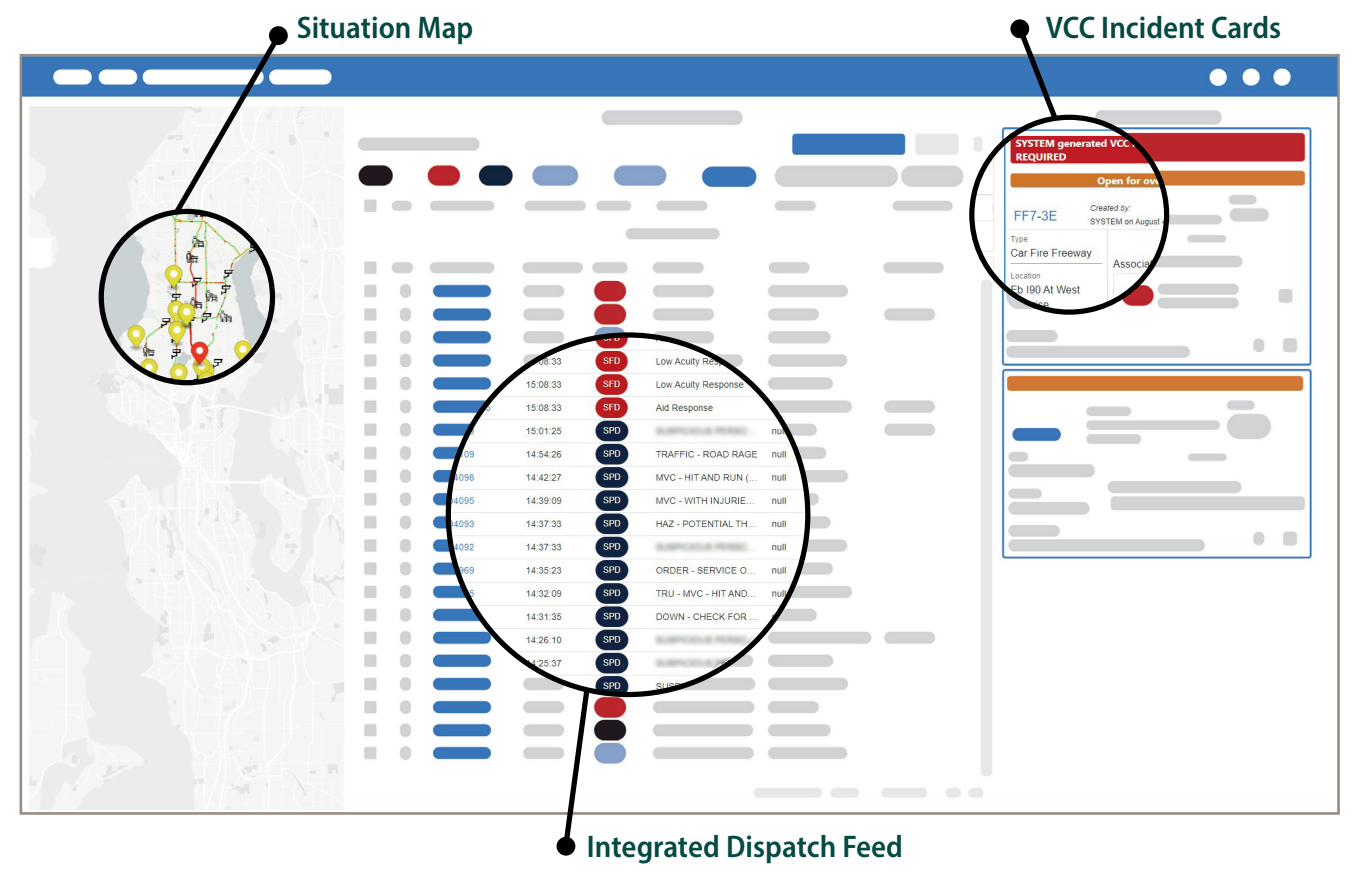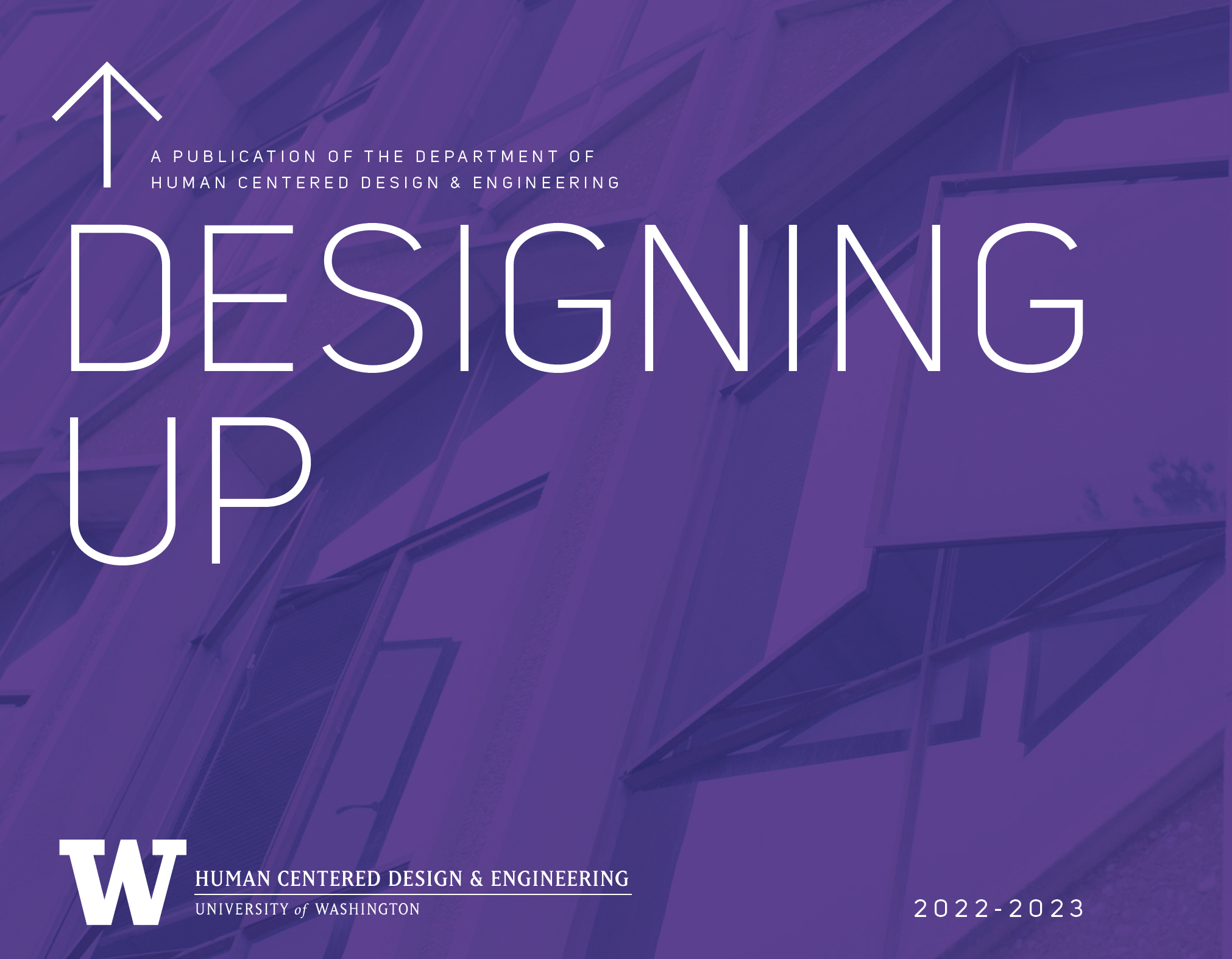Leah Pistorius
June 14, 2023

An HCDE team led by Professor Mark Haselkorn is building the Virtual Coordination Center (VCC), a cloud-based platform for real-time data sharing and coordinated response to quickly clear roadway incidents—while preparing Seattle-area agencies for a collaborative response to “the big one.” The Washington state legislature recently approved approximately $2 million to maintain the VCC and expand it to up to five additional jurisdictions in King County.
Greater Seattle is one of the fastest-growing regions in the US. With its rapidly growing population, unique geography, and limited north/south corridors, the region is particularly vulnerable to incident-related traffic congestion. When an incident occurs, a coordinated response is crucial to reducing the impact on the rest of the transportation system.
Responding to roadway incidents is the responsibility of multiple agencies and jurisdictions. Prior research by HCDE’s Center for Collaborative Systems for Safety, Security, and Resilience (CoSSaR) has found that even when response operations are functioning properly, the coordination among agencies remains siloed and complex.
The CoSSaR team has been working to develop the first-of-its-kind Virtual Coordination Center (VCC), a cloud-based environment where incident response agencies can share real-time data, work together in new ways to quickly clear incidents, and more effectively move people and goods throughout the transportation system. Partners on this project include Washington State Department of Transportation, Seattle Department of Transportation, Seattle Fire Department, Seattle Police Department, Washington State Patrol, King County Metro, and Sound Transit.
“To me, this is a perfect HCDE problem,” said Professor Mark Haselkorn, the director of CoSSaR and project manager of the VCC. “The mobility of an entire region is a highly complex system of people with different needs and ways of working, but loosely tied together with shared goals of maintaining a safe, efficient, and resilient transportation system. We have many elements to design for, but meeting everyone’s needs in their diverse contexts is the central design challenge.” As of May 2023, the VCC is in use by nearly 200 Seattle-area transportation managers, emergency responders, and public information officers across the seven partner agencies.

The virtual coordination center (vcc) dashboard depicts a map of situations, a dispatch feed integrating responding agencies, and an incident card opened by a VCC user.
When an incident occurs, VCC users are updated in real-time about the incident with a shared dashboard view of how other agencies are responding. First responders like police and fire departments can share information about what is happening on the ground, congestion managers can close ramps or change signal timings to divert traffic, transit agencies can strategically deploy buses and rail cars, and public information officers can coordinate on a unified message.
The CoSSaR team began working on this project in 2017, after being approached by Challenge Seattle, an alliance of the 22 largest regional employers led by former Washington State Governor Christine Gregoire, working together with the University of Washington’s CoMotion Mobility Innovation Center. From 2017 through 2020, the CoSSaR team conducted workshops with all the various stakeholders to understand their needs and ideate in a series of feedback design cycles. With support from partners at Pariveda Solutions, the team used agile design processes, which segments the project into stages and incorporates stakeholders at each stage.
One of the biggest challenges the team has faced is working with individuals across agencies with different communication pathways and hierarchies. “Something that may work well for one agency can be the exact opposite for another,” said Hannah Webster Heublein, the VCC’s program support supervisor. “So it’s been an interesting balance to design something that meets the needs of so many groups of people, but general enough that it can be customized to work with their already in-place processes. In many ways, we’re designing a social community. And we need to do that by being in step with the community the whole way.”
“As much as we have been developing the technology, a significant aspect of our process has been building this community too,” said Dr. Sonia Savelli, HCDE senior research scientist and co-director of CoSSaR, who has led the VCC design process. “The VCC is nothing without the input of the people who are using it. And part of that includes figuring out whose input we need. For example, when we first presented this to our community of stakeholders, we heard from a King County Metro bus driver who essentially brought up that the bus drivers are almost like human sensors all over the system. So, that’s an example of a group that had been on the periphery, but through the community-building process we’ve found new voices that can be accounted for in the design of the technology.”
Brie Yost, a program operations specialist in HCDE, is leading the user adoption of the VCC and is onboarding new users weekly. “Each step of the way we are working with everyone who is using the VCC to get their feedback. They help us know what information we need to share when we onboard a new user, and what elements we need to put in our backlog for future iterations,” said Yost.
In April 2023, the Washington legislature approved approximately $2 million in the 2023-2025 budget to maintain the VCC and expand it to up to five additional jurisdictions in King County. The UW team foresees it eventually expanding to a state-wide program. “Expanding outside of Seattle will bring new challenges and opportunities since each jurisdiction and region will have its unique geographical features and stakeholders,” said Haselkorn. “For example, if we deploy the VCC in the Vancouver-Portland corridor, we will have new design and deployment variables, like the state border and the interaction with Oregon agencies.
"To me, this is a perfect HCDE problem. The mobility of an entire region is a highly complex system of people with different needs and ways of working, but loosely tied together with shared goals of maintaining a safe, efficient, and resilient transportation system. We have many elements to design for, but meeting everyone’s needs in their diverse contexts is the central design challenge."
In HCDE’s Spring 2023 course on Design and Management of Complex Systems (HCDE 520), Professor Haselkorn is leading students in imagining the future of the VCC. As part of a class project, students are interviewing transportation operators about their experiences and proposing projects for the VCC expansion.
“While a lot of mobility issues are local, if the incident is big enough you suddenly need a lot of different cities and counties to work together on a statewide or multi-state response,” said Savelli. “We know nobody picks up a new system during a major emergency, so our goal is to help not only manage the day-to-day incidents but build a resilient community that is ready when something much larger comes along.”
The development of the VCC is funded in part by a Federal Highway Administration’s Advanced Transportation and Congestion Management Technologies Deployment Program grant, awarded to the Washington State Department of Transportation in September 2020. In addition to partnering with Washington State Department of Transportation and the City of Seattle, the VCC team is working with King County Metro, Sound Transit, Washington State Patrol, and the Port of Seattle/Northwest Seaport Alliance. Industry partners include Pariveda, Microsoft Azure Devops, Amazon Web Services, INRIX, ReadyOp, Schema, Siemens, ThoughtExchange, and WSP USA. To learn more about CoSSaR and the VCC, visit hcde.uw.edu/cossar.
HIGHLIGHTS FROM 2022-2023 YEAR
2023 Designing Up
View this story and others in HCDE's annual publication, Designing Up, where we highlight activities and accomplishments of HCDE's students, alumni, and faculty.
View the 2023 issue